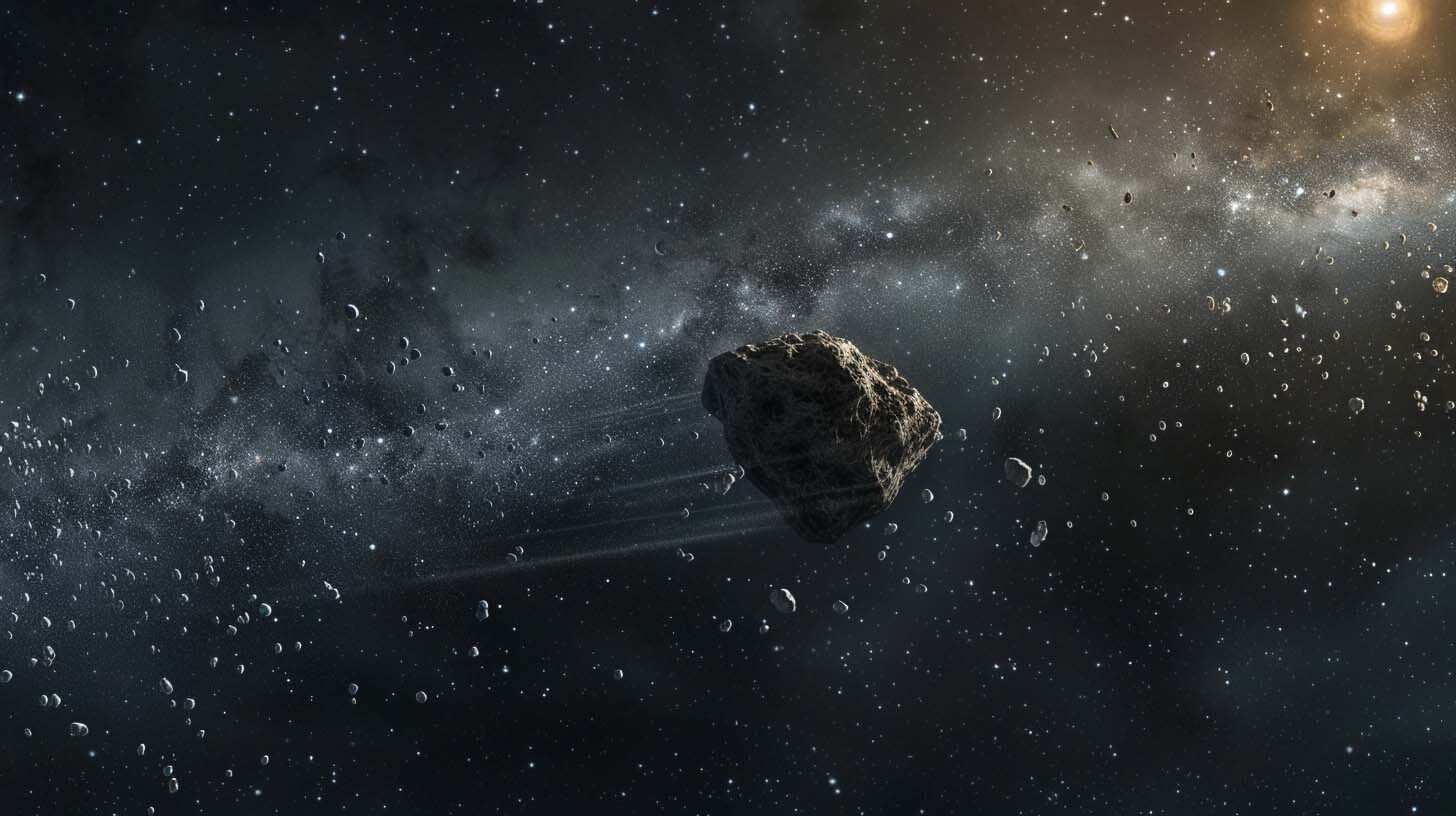Small icy bodies swarm around the Earth, coming from distant corners of the Solar System. These objects, which are neither comets nor asteroids, may be the source of water reaching Earth billions of years ago. A new study suggests that of the 35,000 near-Earth objects, 60% of them are dark comets – hybrid objects that behave like comets and asteroids at the same time. They may have been part of larger bodies in the main asteroid belt between Mars and Jupiter until they were ejected or broken into smaller fragments.

About 71% of the Earth is covered with water, but scientists still don’t know about its origins. There are theories that water could have formed on Earth from the beginning of its existence, or it could have been brought by asteroids or comets from other parts of the Solar System.
“We don’t know if these dark comets delivered water to Earth. The work we’ve done has shown that this is another pathway to get ice from somewhere in the rest of the solar system to the Earth’s environment,” said Aster Taylor, a graduate student in astronomy at the University of Michigan and lead author of the study.
Dark comets or hybrid asteroids
Asteroids are rocky bodies between Mars and Jupiter. They are close enough to the Sun for the ice on them to turn into gas. Comets are composed of ice and dust, and as they approach the Sun, their material vaporizes, forming a tail. Dark comets are small, barely visible objects that don’t have a tail but show orbital acceleration that can’t be explained by the Sun’s gravity alone. Comets accelerate due to the vaporization of ice.
“We think these objects came from the inner and/or outer main asteroid belt, and the implication of that is that this is another mechanism for getting some ice into the inner solar system,” Taylor explains.
To determine the origin of dark comets, the researchers created models to simulate non-gravitational acceleration on various objects to trace the path these objects would have traveled over a period of 100,000 years. They have found that the main asteroid belt is the most likely source of objects experiencing non-gravitational acceleration, and that most objects end up where dark comets are found today.
Accelerating dark comets
Dark comet 2003 RM, one of the objects of study, is traveling in an elliptical orbit between Earth and Jupiter. It was probably pushed out of orbit around Jupiter.
Dark comets are just fragments of larger asteroids that have survived the cosmic push. But they probably still contain ice, which causes their rotation to accelerate.
The study barely touches the surface of these mysterious objects. “There may be more ice in the inner main belt than we thought. There may be more objects like this out there. We don’t really know, but we have many more questions because of these findings,” Taylor summarizes.
According to news.umich.edu


